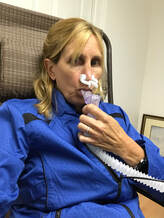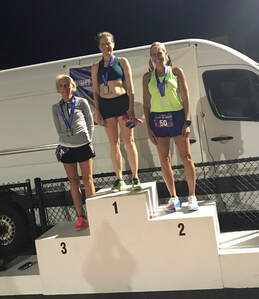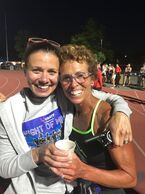Head to your grocery store and pick up a food item. Look at the ingredients and you'll see calories, fat, protein, sugars and more. You assume the nutritional information is right, but it turns out it's not really that valid. When food products are tested in a lab the results can vary by up to 20%. What? Those numbers can be a guideline, but should not direct your choices.
A little history lesson to understand what 200 kcal means. Nicholas Clément introduced calories in lectures on heat engines that were given in Paris between 1819 and 1824. We talk about calories in food, but there are actually two calories - with little and and capital C. The small calorie or gram calorie (usually denoted cal) is the amount of heat energy needed to raise the temperature of one gram of water by one degree Celcius. The large calorie, food calorie, or kilocalorie (Cal or kcal) is the amount of heat needed to cause the same increase on one kilogram of water, so 1 kcal = 1000 cal. When we talk about food Calories it is the big C (but I will use calories in this article, since that is how most people think).
One gram of fat in food contains nine calories, while a gram of either a carbohydrate or contains approximately four calories. Today caloric measurements are made by adding up the calories provided by the energy-containing nutrients: protein, carbohydrate, fat and alcohol (7 Kcal/g). Because carbohydrates contain some fiber that is not digested and utilized by the body, the fiber component is usually subtracted from the total carbohydrate before calculating the calories. This is the Atwater system and here is an example:
A food that contains 10 grams [0.35 ounces] of protein (10 x 4 = 40) and 5 grams [0.2 ounces] of fat (5 x 9 = 45), then the total caloric value is 40 + 45 = 85 calories.
The Atwater system has been used for years, but now more scientists are questioning the validity. For example a 2012 study (1) looking at the Atwater system to calculate caloric content for almonds found it overestimated calories by 32%. The study found that the introduction of almonds to a diet (testing feces and urine) led to a reduction of 5% in energy digestibility. That just means that less calories were absorbed by the body than would be calculated using Atwater's system.
If you pick up an energy bar made with almonds and it says 230 cal it could be 250 cal it could be 200 cal and your body might actually only use 180 as energy. More studies are being done on other foods and as you might imagine the combination of foods also has an effect.
Now think about gyms telling you to look at big picture macros. That means counting carbs, fat and protein calories and overall percentages. Here is an example:
A lot of people shoot for 40% carbs, 35% protein, 25% fat.This means that, if your daily calorie need was 1800 calories, then 40% of those would come from carbs, 35% would come from protein, and 25% would come from fat. Then you would just need to plug in a little math! Here’s an example:
Carbs: 40% x 1800 calories = 720 calories from carbs
Fat: 25% x 1800 calories = 450 calories from fat
Protein: 35% x 1800 calories = 630 calories from protein
Once you know how many calories you’ll want from each macro, you’re almost there! Just one more step to figure out how many grams of each macro you’ll want to aim for. Using the numbers from the previous section, you could calculate the following:
Carbs: 720 calories ÷ 4 calories/gram = 180g carbs
Fat: 450 calories ÷ 9 calories/gram = 50g fat
Protein: 630 calories ÷ 4 calories/gram = 157g protein
So how do you get to the number 1800? A lot of people use online calculators. These calculators rely on thousands and thousands of people and determine on average if someone is a certain height and weight they will burn X calories without doing anything and then they'll burn additional X calories with normal activity. If I enter my data into one of these calculators (all will give you a slightly different number) it might say I use 1700 cal a day to stay alive. Then I head off to exercise and the machine or screen tells me I have burned 600 calories in an hour. I would have another 300 or so in general activity, so according to those calculations I should be eating 2600 calories a day to maintain my current weight. If I decide I want to lose weight I cut calories. Unfortunately many people cut drastically even though all research shows that doesn't work!
Here is the kicker. I have tested my resting metabolic rate and it is - big surprise - not 1700. The last time I tested I was around 1300 (up from 1125)!! So now go back and look at the calculations. They are all off. My resting is lower, my burn during exercise is lower and my normal activity will be lower. If you want to count calories and figure out your macros then you really should be testing your resting metabolic rate (RMR). It is a simple and reasonably priced test ($50). You fast overnight, no caffeine and just water in the morning. Then you sit and breath into a machine for about 20 minutes. The results are your RMR and projected daily caloric needs.
I would argue that the more important data from the test is your fuel mix. Let's go back to those of you counting macros. Our example above was 40-35-25. Where did you get the percentages you are following? Wouldn't it be cool to follow a plan tailored to you? When you do the RMR test you also will learn your fuel mix. That is the mix of carbohydrates and fats you use at rest. Most people would probably say they burn primarily fat at rest. After all at a low heart rate you should be burning fat (at the low end of the aerobic zone - what they call the fat burning zone). The key word there is SHOULD. The reality is that most people I test are not burning through the 70,000+ calories of fat while at rest. Many are burning a lot of the around 2,500 calories of carbs (sugars) we have stored. Then you head off to the gym and burn through the rest (in many cases) - that will be another article on VO2 testing.
News flash - we are all different. Why would you think that a program that works for 25 other people in your class would be perfect for you? When you test your resting metabolic rate you'll start to understand how you're different and you'll know your daily energy needs. It isn't as easy as calories in and calories out for SO many reasons. The more information you have the better choices you can make.
RMR testing will let you know if you are a fat burner or sugar burner. Our goal is to be fat burners as long as possible into exercise. If you are at rest and already burning through your sugar stores you can make nutrition changes. Stay tuned for another article on fat burning, sugar burning and VO2.
For now get signed up for RMR testing.
(1) https://www.ncbi.nlm.nih.gov/pmc/articles/PMC3396444/
* you can look this attractive while you test :-)
A little history lesson to understand what 200 kcal means. Nicholas Clément introduced calories in lectures on heat engines that were given in Paris between 1819 and 1824. We talk about calories in food, but there are actually two calories - with little and and capital C. The small calorie or gram calorie (usually denoted cal) is the amount of heat energy needed to raise the temperature of one gram of water by one degree Celcius. The large calorie, food calorie, or kilocalorie (Cal or kcal) is the amount of heat needed to cause the same increase on one kilogram of water, so 1 kcal = 1000 cal. When we talk about food Calories it is the big C (but I will use calories in this article, since that is how most people think).
One gram of fat in food contains nine calories, while a gram of either a carbohydrate or contains approximately four calories. Today caloric measurements are made by adding up the calories provided by the energy-containing nutrients: protein, carbohydrate, fat and alcohol (7 Kcal/g). Because carbohydrates contain some fiber that is not digested and utilized by the body, the fiber component is usually subtracted from the total carbohydrate before calculating the calories. This is the Atwater system and here is an example:
A food that contains 10 grams [0.35 ounces] of protein (10 x 4 = 40) and 5 grams [0.2 ounces] of fat (5 x 9 = 45), then the total caloric value is 40 + 45 = 85 calories.
The Atwater system has been used for years, but now more scientists are questioning the validity. For example a 2012 study (1) looking at the Atwater system to calculate caloric content for almonds found it overestimated calories by 32%. The study found that the introduction of almonds to a diet (testing feces and urine) led to a reduction of 5% in energy digestibility. That just means that less calories were absorbed by the body than would be calculated using Atwater's system.
If you pick up an energy bar made with almonds and it says 230 cal it could be 250 cal it could be 200 cal and your body might actually only use 180 as energy. More studies are being done on other foods and as you might imagine the combination of foods also has an effect.
Now think about gyms telling you to look at big picture macros. That means counting carbs, fat and protein calories and overall percentages. Here is an example:
A lot of people shoot for 40% carbs, 35% protein, 25% fat.This means that, if your daily calorie need was 1800 calories, then 40% of those would come from carbs, 35% would come from protein, and 25% would come from fat. Then you would just need to plug in a little math! Here’s an example:
Carbs: 40% x 1800 calories = 720 calories from carbs
Fat: 25% x 1800 calories = 450 calories from fat
Protein: 35% x 1800 calories = 630 calories from protein
Once you know how many calories you’ll want from each macro, you’re almost there! Just one more step to figure out how many grams of each macro you’ll want to aim for. Using the numbers from the previous section, you could calculate the following:
Carbs: 720 calories ÷ 4 calories/gram = 180g carbs
Fat: 450 calories ÷ 9 calories/gram = 50g fat
Protein: 630 calories ÷ 4 calories/gram = 157g protein
So how do you get to the number 1800? A lot of people use online calculators. These calculators rely on thousands and thousands of people and determine on average if someone is a certain height and weight they will burn X calories without doing anything and then they'll burn additional X calories with normal activity. If I enter my data into one of these calculators (all will give you a slightly different number) it might say I use 1700 cal a day to stay alive. Then I head off to exercise and the machine or screen tells me I have burned 600 calories in an hour. I would have another 300 or so in general activity, so according to those calculations I should be eating 2600 calories a day to maintain my current weight. If I decide I want to lose weight I cut calories. Unfortunately many people cut drastically even though all research shows that doesn't work!
Here is the kicker. I have tested my resting metabolic rate and it is - big surprise - not 1700. The last time I tested I was around 1300 (up from 1125)!! So now go back and look at the calculations. They are all off. My resting is lower, my burn during exercise is lower and my normal activity will be lower. If you want to count calories and figure out your macros then you really should be testing your resting metabolic rate (RMR). It is a simple and reasonably priced test ($50). You fast overnight, no caffeine and just water in the morning. Then you sit and breath into a machine for about 20 minutes. The results are your RMR and projected daily caloric needs.
I would argue that the more important data from the test is your fuel mix. Let's go back to those of you counting macros. Our example above was 40-35-25. Where did you get the percentages you are following? Wouldn't it be cool to follow a plan tailored to you? When you do the RMR test you also will learn your fuel mix. That is the mix of carbohydrates and fats you use at rest. Most people would probably say they burn primarily fat at rest. After all at a low heart rate you should be burning fat (at the low end of the aerobic zone - what they call the fat burning zone). The key word there is SHOULD. The reality is that most people I test are not burning through the 70,000+ calories of fat while at rest. Many are burning a lot of the around 2,500 calories of carbs (sugars) we have stored. Then you head off to the gym and burn through the rest (in many cases) - that will be another article on VO2 testing.
News flash - we are all different. Why would you think that a program that works for 25 other people in your class would be perfect for you? When you test your resting metabolic rate you'll start to understand how you're different and you'll know your daily energy needs. It isn't as easy as calories in and calories out for SO many reasons. The more information you have the better choices you can make.
RMR testing will let you know if you are a fat burner or sugar burner. Our goal is to be fat burners as long as possible into exercise. If you are at rest and already burning through your sugar stores you can make nutrition changes. Stay tuned for another article on fat burning, sugar burning and VO2.
For now get signed up for RMR testing.
(1) https://www.ncbi.nlm.nih.gov/pmc/articles/PMC3396444/
* you can look this attractive while you test :-)




 RSS Feed
RSS Feed